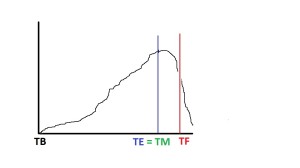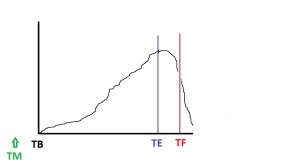Revised April 22, 2016; revised November 15, 2019; September 6, 2020
Libet’s Experiment
1. In 1983, Benjamin Libet conducted an experiment (apparently) showing that our brain makes decisions before we become aware of them. When a person moves a finger, the brain activity appears to start before the person makes that decision.
- Numerous follow-up experiments have since taken place. All those experiments seemed to confirm this observation, even though the time delays varied.
- Scientists and philosophers are quite puzzled, and some are very worried that we are just zombies run by a program in our brains.
2. Here is a video clip that illustrates the basic experiment:
Neuroscience and Free Will
Here is a recent YouTube video on the same subject:
Does Libet’s Experiment Prove There is No Free Will?
3. Since Libet published his results, scientists and philosophers have been debating whether these experiments show that man has no free will:
https://en.wikipedia.org/wiki/Neuroscience_of_free_will
- Also, see the recent post “Mind Is Not in the Brain,” and follow-up posts at “Buddha Dhamma – A Scientific Approach.”
Refined Follow-Up Experiments
4. The second recent experiment is a bit more refined. Let us summarize that experiment:
- The person randomly decides (with no pre-planning) to press a button at some time. Let us take this time to be TM (M for the mind) making the decision.
- He presses the button at TF, which is recorded electronically (F for using the finger to press the button).
- At the same time that he decides to press the button, he is watching the clock and makes a mental note of the “time” and, after hitting the button, records that time too: TE (E for using the eye to see the time on the clock. It is important to note that TE is the time that the MIND says it saw the clock).
- Finally, the sensors attached to his head record his brain activity. Let us take the documented start of brain activity to be TB.
Here is a summary from the researchers (you can click on the figure to expand and then hit the back button on the browser to get back):
So, the researchers conclude that since brain activity started at TB before, either (i) him pressing the button (at time TF) or (ii) him recording the “clock” at the time TE when he made the decision, the brain activity started before he made the decision.
- The problem is that they ASSUME that the time, TE, that one gets off the clock is the same as the time, TM, that the mind decides to press the button.
Explanation From Buddha Dhamma
5. In Buddha Dhamma, the mind is the precursor to every action we do with the body. The brain implements the mind’s decisions. The brain is just a very sophisticated computer.
- Buddha’s explanation of the mind is comprehensive. The basic ideas in “Moral Living and Fundamentals” and “Essential Abhidhamma – The Basics.”
- More detailed analyses on how the mind and the brain work together at “Buddha Dhamma – A Scientific Approach,” “The Grand Unified Theory of Dhamma” and “Mental Body – Gandhabba,”
- Deeper aspects are discussed in the “Abhidhamma” section.
- Some of the essential aspects are discussed below.
Brain Is The “Control Center”
6. The brain is the control center for the mechanical body to perform both tasks ASSIGNED BY THE MIND. The brain gets the finger to push the button and the physical eye to look at the watch.
- Now, the mind is in the manomaya kāya and is lined up with the heart of the physical body. The mind and the brain are connected by a signal system that is analogous to how television or radio signals are transmitted (very fast, possibly electromagnetic). The brain communicates with the five senses via the nervous system, and those communications are slower.
- Thus, the brain gets the message from the mind to “press the button” and to “watch the clock.” Therefore, TB is ALWAYS later than TM.
- Modern science has shown that “It normally takes 0.4 – 0.6 seconds for the nervous system to activate available muscle motor units to contract,……”. (see at the end of the article:https://en.wikipedia.org/wiki/Motor_control). The finger movement involves muscles in the arm, and the eye movement involves muscles in the head and the eye).
- Both actions of “watch the clock” and “press the button” are initiated by the brain (with the help of the central nervous system) per the mind’s instructions. The eye function circuitry can be logically thought to be a bit faster than the mechanical finger moving. Thus, “watching the clock” gets done first with the eye, and a little time later, the finger has pushed the button. So, here is the time sequence per Buddha Dhamma (you can click on the figure to expand and then hit the back button on the browser to get back):
6. The mind initiates all body movements. Here, the mind starts the brain activity, i.e., TB is later than TM. The brain activity starts AFTER the mind decides to take action because the brain needs to get the signal from the mind. The seat of the mind (hadaya vatthu) lies close to the physical heart, far away from the brain.
- Now, the brain must carry out those two functions of pressing the button and looking at the clock. The vision circuitry is faster. The mechanical movement of the fingers is slower (it involves moving muscles), and thus, pushing the button happens a bit later.
Back to Libet’s Experiment
7. Now, let us go back to the first experiment. The only difference here is that the person is not recording the time. He presses the left or right button. So, there are just two events recorded now instead of three events. All we have to do is to remove TE from the above two graphs.
- It is simpler: His mind decides to push the button. The mind directs the brain to press either the left or right finger, and it takes time for the brain to mobilize the muscles to move the finger. The time sequence is the same as in the exact figure. The mind decides (TM), the brain starts working on it (TB), and the sensors attached to his head record that brain activity (wiggly line). Finally, the finger pushes the button (TF).
- As in the other experiment, the mistake is to assume that finger pushing happens SIMULTANEOUS with the mind’s decision. However, the mind only gets the brain (the computer) to initiate the complex sequence of events to work the muscles in the arm and hand to move the finger, which is the lag time.
An Analogy
8. The body is like a mechanical instrument, say, a sophisticated military tank used to fire at a distant object. The operator is like the mind. He aims the gun barrel using sophisticated computer-controlled circuitry and then fires the gun. He can drive the tank wherever he wants. But things do not, and cannot, happen simultaneously with the operator’s decision. The gun needs to be moved into position before it is fired.
- The mind controls the body just like that. The finger (and the eye) in the above case(s) are just two instruments helping with the two tasks of pressing the button (and reading the clock), and the brain is the “control center” that oversees both those activities on the command of the mind.
- The connection between the body and the mind is explained in the post, “Brain – Interface between Mind and Body,” and other posts on the gandhabba.
Thoughts Arise in Hadaya Vatthu, Not In The Brain
9. The “seat of the mind” (hadaya vatthu) is in the manomaya kaya (also called gandhabba). Thoughts arise there, not in the brain. The brain is a very sophisticated computer that controls the physical body per instructions the mind gives. At death, the manomaya kaya with the mind leaves the body, and both the body and the brain become lifeless. See “Ghost in the Machine – Synonym for the Manomaya Kaya?“, “Manomaya Kaya (Gandhabba) and the Physical Body,” and “Manomaya Kaya and Out-of-Body (OBE) Experience.”
- Therefore, we are not robots controlled by a program in our brains. The brain is just a sophisticated mechanical instrument that helps the mind coordinate tasks (like the computer in the tank in the above example, which helps the tank operator). But the brain carries out specific functions, like breathing, without input from the mind. See “Brain – Interface between Mind and Body.”
- Any person has the capability to do things on an unimaginable scale. We do not realize the power of our minds; see “Power of the Human Mind – introduction” and the follow-up posts.
September 6, 2020 update:
A few recent experiments have reduced the delay between TE and TF in #4 above. The following is a recent paper on the subject: “Sanford-Libet’s Intention Reports are Invalid-2020.“
- To quote from the abstract of the above paper: “..We argue that Libet’s intention reports are invalid and explore the phenomenology of intention in Libet’s experiment.”



